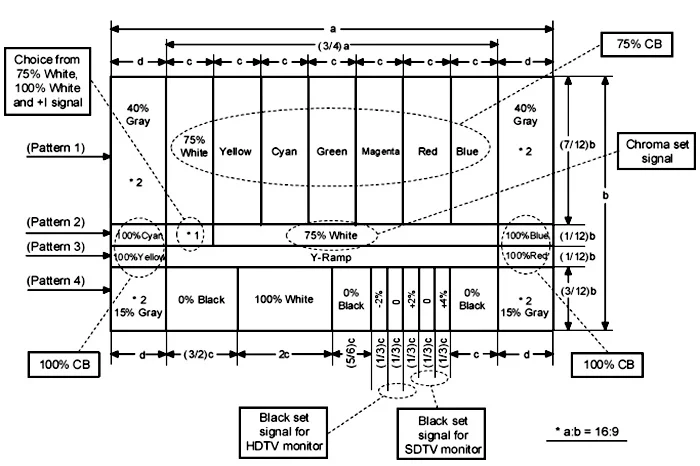Rec. 709 is the standard color space for HD images. It specifies a white point at D65, 6500 degrees kelvin. If this white point is placed correctly, it should ensure that all colors and grayscale within the gamut are accurately reproduced. If it does not, then there are calibration issues that cannot be resolve through a white balance adjustment alone.
When we white balance a monitor we start at D65 and then adjust Red, Green, and Blue gains to push 100% into the correct target white point. As is exemplified in the graphic above, this is represented by a two dimensional chart with x and y coordinates. For LCD's, CRT's, and other legacy displays the coordinates for white within Rec. 709 are x .313 y .329
These adjustments are made using a spectrophotometer or colorimeter aka "probe". The process of white balance adjustment with a probe is similar from monitor to monitor. Some can use a probe to do this process automatically whereas others must be done manually.
Abel Cine has a great article on how to use this hardware / software combination to White Balance your monitor >>>
An overview of the process, first input a 100% white test signal into the monitor and then use the probe to objectively measure the screen. It will tell where this white image is hitting in the gamut by way of x and y coordinates. From here, RGB gains are adjusted until the probe verifies that white is hitting the correct coordinates, x .313 y .329. If you're using an OLED monitor, you will use different coordinates than x .313 y .329 and you may need to adjust Bias as well to compensate for chroma cast in the dark tones of the picture. This process is very similar to adjusting White Balance, just using 20% neutral gray instead of 100% white.
The most inexpensive way to do a White Balance Adjustment on your monitor is with a free software from Sony used with the i1 Pro and i1 Pro 2 probes. These aren't the most accurate probes available but they are well priced and I've had very good results aligning and matching displays with them.
Use the probe / software and adjust RGB Gains and Bias to hit the correct targets for both 100% White and 20% Gray. Color temperature is denoted by "x" and "y". Luminance level is "Y".
100% White (Gains)
x .313
y .329
Y 100 (studio level)
20% Gray (Bias)
x .313
y .329
Y 2.7 (gamma 2.2)
The x and y points will always be the same for both Gain and Bias. The Y level for Bias will change with the gamma setting be it 2.2, 2.4, or 2.6. Consult your manufacturer!
AN IMPORTANT NOTE ON MONITOR GAMMA:
Rec. 709 doesn't actually specify a gamma but the de facto standard is 2.2. The newer Rec. 1886 specs gamma at 2.4. This topic is beyond the scope of this post so I've written a separate article on it. Rec.ommendations for Display Gamma >>> For simplicities sake, this article assumes we are working at a gamma of 2.2
Once we're successfully white balanced and selected gamma, we can now use color bars to finish the calibration process.
Part 2: Setting Brightness, Contrast, and Chroma Level with Color Bars
AN ANALYSIS OF THE SMPTE HD COLOR FIELD:
The components of this test signal are 75% Contrast Color Bars (Yellow, Cyan, Green, Magenta, Red, Blue), 20% Blue Chip, 10% Purple Chip, 75% Contrast White Chip, 100% Contrast White Chip, 0% Black chips, and The Pluge. When using this test signal to set Brightness, Contrast, and Chroma, all you really need to concern yourself with are the 75% Color Bars, 100% White Chip, and Pluge. The 20% Blue Chip and 10% Purple Chip fall along the IQ Line on the Vectorscope for verification that the color information in the test signal is accurately centered on the scope.
The Pluge will help you set your Brightness (Black Level). It consists of a -3.5% (IRE) chip on the left, 0% chip in the middle, and 3% chip on the right.


















 © 2021 Bennett Cain / All Rights Reserved /
© 2021 Bennett Cain / All Rights Reserved /